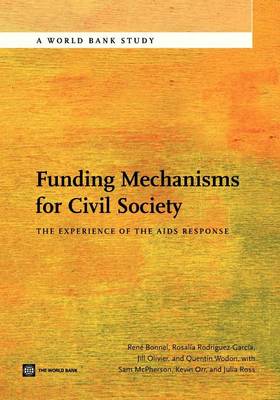World Bank Study
2 total works
The purpose of this study is to build a stronger evidence base on the role of faith-inspired, private secular, and public schools in sub-Saharan Africa using nationally representative household surveys as well as qualitative data.
Six main findings emerge from the study:
(1) Across a sample of 16 countries, the average market share for faith-inspired schools is at 10-15 percent, and the market share for private secular schools is of a similar order of magnitude;
(2) On average faith-inspired schools do not reach the poor more than other groups; they also do not reach the poor more than public schools, but they do reach the poor significantly more than private secular schools;
(3) The cost of faith-inspired schools for households is higher than that of public schools, possibly because of a lack of access to public funding, but lower than that of private secular schools;
(4) Faith-inspired and private secular schools have higher satisfaction rates among parents than public schools;
(5) Parents using faith-inspired schools place a stronger emphasis on religious education and moral values;
(6) Students in faith-inspired and private schools perform better than those in public schools, but this may be due in part to self-selection.
Six main findings emerge from the study:
(1) Across a sample of 16 countries, the average market share for faith-inspired schools is at 10-15 percent, and the market share for private secular schools is of a similar order of magnitude;
(2) On average faith-inspired schools do not reach the poor more than other groups; they also do not reach the poor more than public schools, but they do reach the poor significantly more than private secular schools;
(3) The cost of faith-inspired schools for households is higher than that of public schools, possibly because of a lack of access to public funding, but lower than that of private secular schools;
(4) Faith-inspired and private secular schools have higher satisfaction rates among parents than public schools;
(5) Parents using faith-inspired schools place a stronger emphasis on religious education and moral values;
(6) Students in faith-inspired and private schools perform better than those in public schools, but this may be due in part to self-selection.
Funding Mechanisms for Civil Society
by Rene Bonnel, Rosalia Rodriguez-Garcia, Jill Olivier, Quentin Wodon, Sam McPherson, and Kevin Orr
Published 31 January 2013
In the past decade the global financial assistance for AIDS responses increased tremendously and the donor community provided greater resources to community responses. Yet little is known about the global magnitude of these resources and their allocation among HIV and AIDS activities and services. To address this knowledge gap, this report pulls together evidence from several different sources (donor data bases, surveys of civil society organisations, country funding profiles) to determine, among other things, how funds are reaching civil society and community-based organisations, how these funds are being used, and the degree to which these organisations rely on other sources of funding. The analysis suggests that funding flows have increased dramatically for civil society organisations (CSOs), reaching at least $690 million per year on average during the period 2003 - 2009. However, much smaller funding is reaching organisations at local level.
The report documents the impact achieved by this funding. Traditionally, civil society organisations have been perceived at times to be providers of humanitarian aid, innovators in implementing responses adapted to local needs, or inefficient actors diverting public funds from more effective uses. The report argues that current evidence shows that community responses play a useful complementary role to national AIDS programs that has been achieved with relatively little funding. Contrary to a widespread view, the report highlights that community responses add resources to national programs. In Kenya, Nigeria and Zimbabwe, substantial mobilisation of resources in the form of volunteers are mobilised by communities. There is a strong risk that in the current environment of increased resource scarcity, prevention programs implemented by civil society organisations would be cut unless there is strong evidence of value for money being generated. Community-based organisations are ill equipped to answer that question, but there is scope for improving the results that they generate.
The report argues that improving coordination with national programs, strengthening consistency between local activities and HIV epidemics, building stronger network of civil society organisations, and mobilising sustainable funding are the most important ways for community responses to move forward and address the challenges faced by community responses.
The report documents the impact achieved by this funding. Traditionally, civil society organisations have been perceived at times to be providers of humanitarian aid, innovators in implementing responses adapted to local needs, or inefficient actors diverting public funds from more effective uses. The report argues that current evidence shows that community responses play a useful complementary role to national AIDS programs that has been achieved with relatively little funding. Contrary to a widespread view, the report highlights that community responses add resources to national programs. In Kenya, Nigeria and Zimbabwe, substantial mobilisation of resources in the form of volunteers are mobilised by communities. There is a strong risk that in the current environment of increased resource scarcity, prevention programs implemented by civil society organisations would be cut unless there is strong evidence of value for money being generated. Community-based organisations are ill equipped to answer that question, but there is scope for improving the results that they generate.
The report argues that improving coordination with national programs, strengthening consistency between local activities and HIV epidemics, building stronger network of civil society organisations, and mobilising sustainable funding are the most important ways for community responses to move forward and address the challenges faced by community responses.

